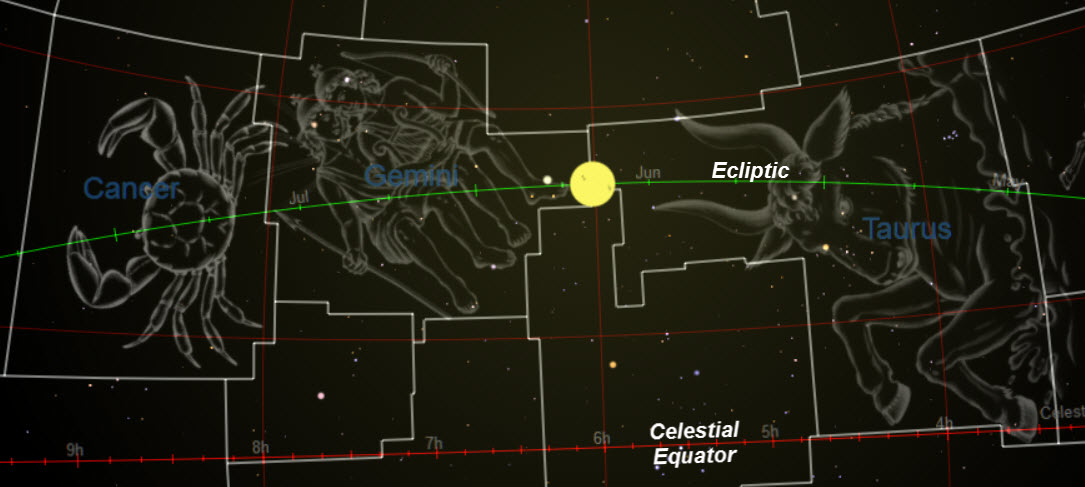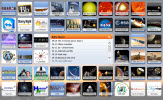Volume 31 Issue 6
June 2025
June 2025
Month at a Glance:
This month Northern Hemisphere spring comes to an end and its summer begins on Saturday, June 21, 2025 at 02:40 am UT or 9:40 pm Friday June 20 CDT. This is when the Sun ‘reaches’ the celestial coordinates of 23.5o north declination and 6 hours right ascension. On this date the Sun is described as over the Tropic of Cancer, 23.5o, north latitude of the Earth’s equator.
With respect to the southern hemisphere this is the end of their summer and start of their fall season. So thinking globally my preference has been to use the name of the month to designate the season change. Hence the use of the term June Solstice rather than summer solstice.
Planet viewing is sort of split between morning and evening with Mercury, Mars and Saturn as the evenng planets over the southwetern horizon after sunset. This leaves Venus as the sole morning planet. Jupiter is too close to the Sun and will reappear in the morning skies toward the end of next month.
Click here for the month at a glance calendar.
What is this? "It's a prediction of when Lees Summit, MO, will have good weather for astronomical observing." Click on the graphic to go to the Clear Sky web site.
This month Northern Hemisphere spring comes to an end and its summer begins on Saturday, June 21, 2025 at 02:40 am UT or 9:40 pm Friday June 20 CDT. This is when the Sun ‘reaches’ the celestial coordinates of 23.5o north declination and 6 hours right ascension. On this date the Sun is described as over the Tropic of Cancer, 23.5o, north latitude of the Earth’s equator.
With respect to the southern hemisphere this is the end of their summer and start of their fall season. So thinking globally my preference has been to use the name of the month to designate the season change. Hence the use of the term June Solstice rather than summer solstice.
Planet viewing is sort of split between morning and evening with Mercury, Mars and Saturn as the evenng planets over the southwetern horizon after sunset. This leaves Venus as the sole morning planet. Jupiter is too close to the Sun and will reappear in the morning skies toward the end of next month.
Click here for the month at a glance calendar.

What is this? "It's a prediction of when Lees Summit, MO, will have good weather for astronomical observing." Click on the graphic to go to the Clear Sky web site.

Mercury returns to the evening skies by around the end of the first week. The innermost planet will be visible but low above the western horizon for Northern Hemisphere observers.
Venus reaches its greatest western elongation on the 1st and is very visible above the eastern horizon. During this month, each day, Venus will be rising closer to sunrise local time.
Mars is visible as an evening planet moving eastward amongst the stars of the constellation Leo the Lion. On the 16th Mars will be close to the star Regulus and both will be shining at approimately the same apparent magnitude.
Dwarf Planet Ceres rises after midnight local time but with an apparent magnitude around 8.0 this Dwarf Planet will only be visible with some sort of optical assistance.
Jupiter is too close to the setting Sun to be safely seen and Jupiter will reach solar conjunction on the 25th before returning to the morning skies,
Saturn rises late in the evening. Watch for Saturn to move within 1o of the planet Neptune at the end of the month, coming the closest on the 29th.
Uranus is returning to the morning skies and gradually will rise earlier as the month progresses.









